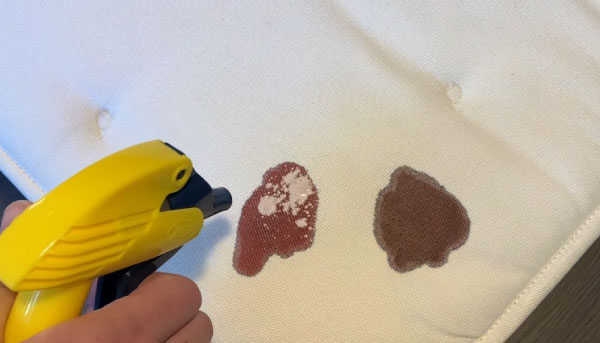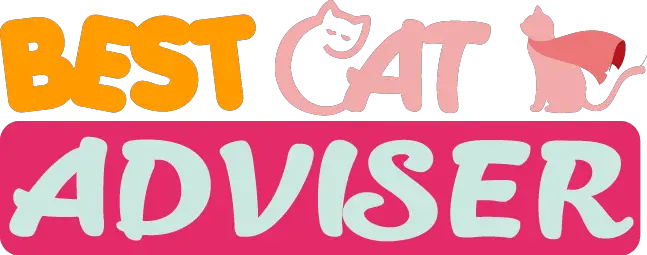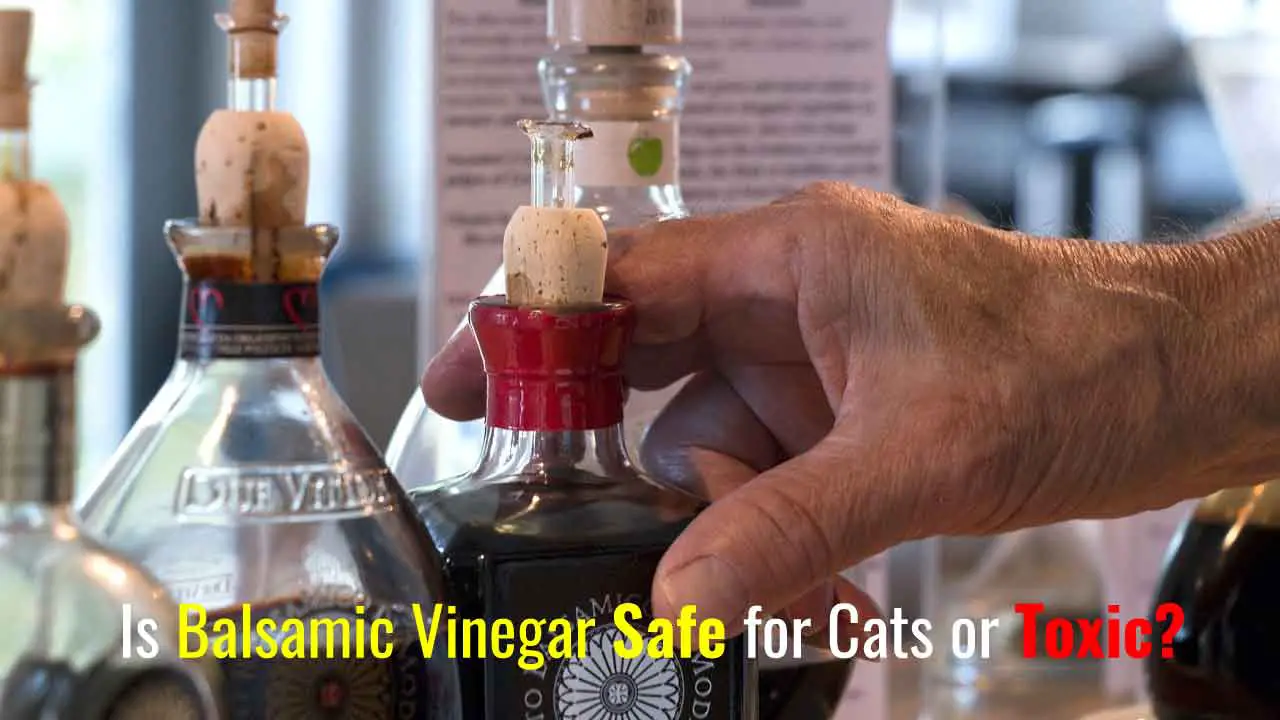When you’ve pulled back your bed, have you ever noticed any unexpected brown stains left by your cat? If so, you’re not alone in this confusing and somewhat worrying discovery.
Cat leaving brown spots on bed could be anything from a harmless bit of dirt they’ve tracked into a sign of a health issue such as internal bleeding, anal gland leakage, or incontinence. Sometimes, it’s behavioral—a cat form of communication or a result of stress.
But as much as we love our cats, these brown spots on the bed can be a cause for concern, raising questions about their health and behavior.
In this article, we’re diving into the ‘why’ behind this messy mystery, bringing you insight and peace of mind.
Why Your Cat Leaving Brown Spots on Bed: Common Reasons

Cats are generally clean animals, and such behavior can be a sign of deeper issues. Here’s a closer look at the potential reasons:
Reason 1: Health-Related Causes
Cats have two small glands near their anus that secrete a fluid with a distinctive odor. Normally, these glands empty when the cat defecates, but if they become internally bleeding, clogged, or infected, the substance can end up on your bedding.
As cats get older, they may develop incontinence or lose some of their mobility, making it difficult for them to reach the litter box in time. Illnesses can also affect a cat’s ability to control their bladder or bowels.
Sometimes, brown spots may be the result of a cat’s upset stomach. If your cat is experiencing diarrhea or other digestive issues, there might be a more serious health condition at play.
Reason 2: Behavioral Causes
If your cat feels its territory is threatened, it may resort to leaving these marks on your bed, which represents a significant part of its territory.
On the other hand, emotional distress can result in a cat urinating or defecating outside the litter box. Changes in the environment, such as new pets, new people, or even changes in the household routine, can cause stress in cats.
Reason 3: Environmental and Lifestyle Causes
Cats may step into something dirty or spill something on themselves and then transfer it onto your bed. Outdoor cats or those who have access to the outdoors are more prone to this.
Sometimes, it’s as simple as a litter box that is too dirty, in an inconvenient location, or has a type of litter your cat doesn’t like. Cats can be quite particular about their toileting habits.
Reason 4: Dietary Causes
Cats may also vomit on your bed, leaving brown spots if they eat too quickly or have a reaction to their food. A sudden change in a cat’s diet can upset their stomach, leading to accidents on the bed.
If your cat has a habit of eating things it shouldn’t, this can lead to gastrointestinal issues and the unpleasant result of brown spots where they nap or rest, which might be your bed.
You may also like: Accidentally Gave Cat Double Dose of Flea Medicine
Common Causes and Related Symptoms: Easy Understanding
We created a chart to display common causes of cats leaving brown spots on the bed and the corresponding symptoms will provide cat owners with a quick reference to help determine the possible issue their pet might be facing.
| Common Causes | Corresponding Symptoms | Possible Additional Signs |
|---|---|---|
| Anal Gland Issues | Brown, oily spots; strong, musky odor | Scooting, licking or biting at the base of the tail |
| Aging or Illness-related Incontinence | Wet spots, possibly with urine; inconsistent with litter box usage | Straining to urinate, increased thirst, lethargy |
| Digestive Problems | Loose, watery stools; spots accompanied by a foul odor | Vomiting, loss of appetite, abdominal pain |
| Behavioral Marking | Small spots found in various locations; strong urine smells | Aggression, excessive scratching, or rubbing against objects |
| Stress or Anxiety | Spots found on the bed and other resting areas | Hiding, changes in appetite, increased vocalization |
| Dirty Paws or Fur | Brown streaks or spots; tracks leading to the bed | Mud or dirt in the coat, paws, or claws |
| Litter Box Avoidance | Spots consistently found outside of the litter box | Overgrooming, reluctance to use the litter box, vocalization near the box |
| Food-related Issues | Vomit with food particles; brown, chunky spots | Gorging on food, changes in eating habits |
| Dietary Changes | Diarrhea spots; soft, unformed stools | Gas, bloating, changes in stool color |
| Ingestion of Non-food Items | Vomit or stools with foreign materials; varied colors of spots | Lethargy, drooling, pawing at the mouth |
Please keep in mind that this chart is a simplified guide and should not replace professional veterinary advice. If your cat shows any of these symptoms, especially along with brown spots on your bed, it’s best to consult with a veterinarian to diagnose and address the underlying cause.
Cat Leaving Rust Colored Spots: Cleaning Solutions

When you find brown spots on your bed courtesy of your cat, it’s important to address the problem both behaviorally and in terms of cleanliness.
For Immediate Cleaning Solutions
- Before anything else, blot up as much of the spot as possible with paper towels if it’s still wet.
- Use an enzyme-based cleaner designed for pet stains. These break down the organic matter and help to neutralize odors.
- In a pinch, a mixture of white vinegar and water can help remove stains. Baking soda can also be used after cleaning to absorb odors.
- Do not use hot water or steam cleaners on biological stains as the heat can set the stain and the odor.
- Allow the area to air dry completely after cleaning. Fans can help speed up the process.
For Long-term Strategies
- Consider investing in a waterproof mattress cover to protect your bed from future incidents.
- Implement a regular cleaning schedule for your cat’s litter box and the areas where they spend the most time.
- Watch for any recurrent issues that may indicate a health problem and consult with a veterinarian if necessary.
- If the problem is behavioral, address the root cause with the help of a vet or a cat behaviorist. This may include stress reduction, environmental enrichment, and behavioral training.
- For persistent or large stains, you may need to hire professional cleaning services that specialize in pet stains and odors.
How to Prevent Cat Leaves Brown Spots on the Bed Issue: Solutions
Prevention is essential to avoid brown spots on your bed becoming a regular occurrence. Here’s a comprehensive strategy to help you prevent these situations:
Step 1: Health and Diet

Schedule annual or bi-annual veterinary visits for health screenings. Discuss your cat’s diet with the vet to ensure it’s meeting your cat’s nutritional needs and not causing digestive issues.
Then feed your cat high-quality food that is appropriate for their age, size, and health requirements to prevent digestive problems.
Step 2: Litter Box Management
Always try to keep the litter box clean and scoop it at least once a day. Have one more litter box than the number of cats in your home, and place them in quiet, easily accessible locations. Always use a cat-friendly litter. Cats can be particular about the type of litter they use.
Also ensure the litter box is large enough and consider whether your cat prefers covered or uncovered boxes.
Step 3: Environmental Enrichment
Create a stress-free environment by maintaining a routine and providing safe hiding spaces. Provide regular play and exercise to reduce anxiety and potential behavioral issues.
Ensure your cat has its own space and resources, like scratching posts and toys, to discourage territorial marking.
Using these preventative measures can greatly reduce the possibility of your cat leaving brown spots on your bed. Always observe your cat’s behavior and health closely. A clean home and a happy, healthy cat are the best defenses against unwanted bed stains.
Read Also: Can Wet Food Cause Diarrhea in Cats
FAQs: Frequently Asked Questions
Why is my cat suddenly leaving stains on the bed?
Sudden changes in a cat’s behavior, like leaving stains on the bed, can be attributed to several factors. These may include health issues such as urinary tract infections, stress, anxiety, or changes in the household environment. It’s also possible that the litter box is not clean or the cat is not comfortable with its location. Observe your cat closely for any additional symptoms and consult a vet to rule out medical problems.
Could brown spots be a sign of a serious health issue?
Yes, brown spots can sometimes be a sign of a serious health issue. They can indicate internal bleeding, problems with the anal glands, or digestive issues. Brown spots that are actually blood could signal conditions like feline lower urinary tract disease (FLUTD), infections, or even cancer. Any brown spots should be monitored, and if they persist, a veterinary consultation is crucial.
How can I train my cat to stop this behavior?
Training a cat to stop leaving stains on the bed starts with understanding the root cause of the behavior. Ensure the litter box is clean, accessible, and in a quiet location. If the behavior is stress-related, provide a safe and comfortable environment for your cat. Positive reinforcement for using the litter box can also be effective. In some cases, you might need the help of a professional animal behaviorist.
What are the best products for removing brown spots from fabric?
The best products for removing brown spots from fabric are enzymatic cleaners that are specifically designed to break down pet stains and odors. These cleaners digest the organic matter, causing the stain and smell. It’s important to follow the product instructions for the best results and to test any cleaner on a small, inconspicuous area first to ensure it doesn’t damage the fabric.
How often should I clean my cat’s litter box to prevent accidents?
To prevent accidents, it’s best to scoop the litter box at least once daily to change the litter and clean the box with soap and water weekly. If you have more than one cat, you may need to clean more frequently. Keeping the litter box clean and odor-free is essential to encourage your cat to use it regularly.
What dietary changes can help prevent cat’s brown spots?
Dietary changes can help prevent brown spots if they are related to digestive issues. High-quality, easily digestible food that’s appropriate for your cat’s age and health status can prevent diarrhea and constipation. It’s also important to ensure your cat has constant access to fresh water. If your cat has food sensitivities or allergies, your vet may recommend a special diet to alleviate these problems.
Final Verdict
When you find brown spots on your bed from your cat, it’s normal to feel a mix of concern and frustration.
Remember, patience and attentiveness are key. We tried our best to provide a detailed guide about this cat leaving brown spots on bed topic. By taking these steps, you can work towards stopping your cat from leaving brown spots on your bed, ensuring your pet’s health and a clean, pleasant home environment.




